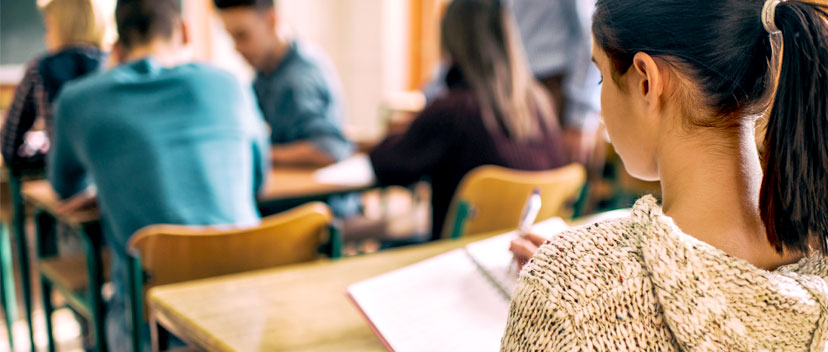Get the NEW 2023 “Ultimate Academic Summer Cleaning Checklist” >
Updated for 2023 we have added a classroom cleaning checklist in downloadable pdf form. You can also check out our ultimate school cleaning guide that has valuable disinfectant information for schools. Classrooms are the epicenter of learning; the place where young minds are molded into the great thinkers of tomorrow. They are also one of the most dirt-ridden places, harboring an unimaginably high concentration of germs, grime and viruses due to the high level of human traffic and shared space. With student’s hands averaging 1,200 aerobic bacteria per square inch1, it’s no surprise that classrooms are in constant need of deep-cleaning. Luckily, there are periodic cleaning activities that students, staff and teachers can perform to keep the never-ending tide of germs and grime to a minimum.
Follow this classroom cleaning checklist to cut down the amount of harmful bacteria and dirt in your school’s learning spaces to ensure a healthy experience for students and teachers alike. If you’re still having trouble keeping your classroom clean, it may be time to contact a commercial cleaning company for their services.
Classroom Cleaning Checklist
- Disinfect Desks and Shared Surfaces
- Dust Cabinets and Bookshelves
- Vacuum Carpeted Floors and Mop Laminate Floors
- Empty Trash Receptacles Regularly
- Clean and Dry Sinks and Surrounding Areas Daily
- Wipe Down Doorknobs and Other Common Touch Points Daily
Following this checklist can help keep your classroom clean and safe for students and teachers.
How to Clean a Classroom
A clean classroom is a safe and healthy learning environment for students and teachers. Here are some tips on how to keep your classroom clean:
- Desks and countertops: Wipe down with a clean towel and non-toxic disinfectant. Unplug keyboards and spray between keys with compressed air. Use a cotton swab or towel with a small amount of rubbing alcohol to clean individual keys.
- Bookshelves and cabinets: Dust with a microfiber cloth or moist towel. Pay attention to the top shelves and corners, where dust can collect.
- Carpets: Vacuum in vertical rows, twice. This will help to loosen dirt and debris that is embedded in the carpet fibers. Open windows before vacuuming to help circulate the air and reduce dust.
- Laminate floors: Mop with a solution of equal parts water and non-toxic floor cleaner. Allow the floor to dry completely before walking on it.
- Trash bins: Empty trash bins regularly. This will help to prevent the buildup of odors and pests.
- Sinks: Wipe down with non-toxic disinfectant. Dry the sink afterward to prevent the growth of mold or mildew.
- Doorknobs and handles: Disinfect with prepackaged wipes or a non-toxic disinfectant spray and a dry towel. This will help to prevent the spread of germs.
- Encourage handwashing: Remind students to wash their hands often, especially after using the restroom, before eating, and after being around someone who is sick.
- Consider professional cleaning: If your classroom is large or has a lot of hard-to-reach areas, you may want to consider hiring a professional cleaning service to help you keep it clean.
Following this checklist can help increase the cleanliness and overall safety of a classroom, for both teachers and students. While classroom layouts differ, this general classroom cleaning checklist will help reduce the amount of germs, dirt and grime from undoubtedly taking hold of any learning space.
Did you follow this checklist but still feel like your students’ learning is being dampened by a dirty environment? It may be time to contact a commercial cleaning corporation to consult about a classroom deep cleaning.


One thought on “The Essential Classroom Cleaning Checklist”
Comments are closed.